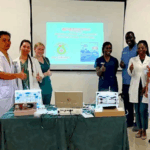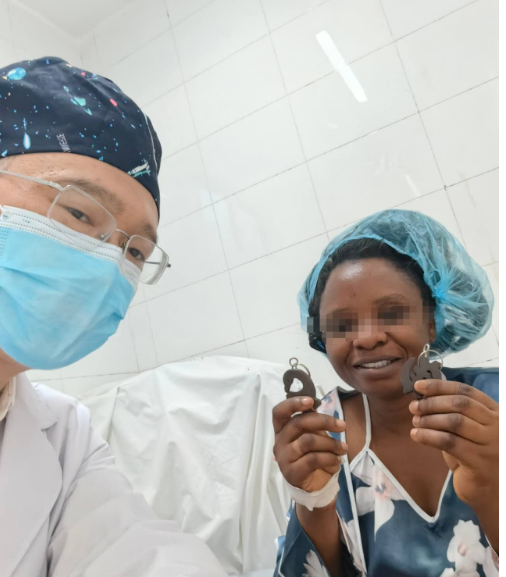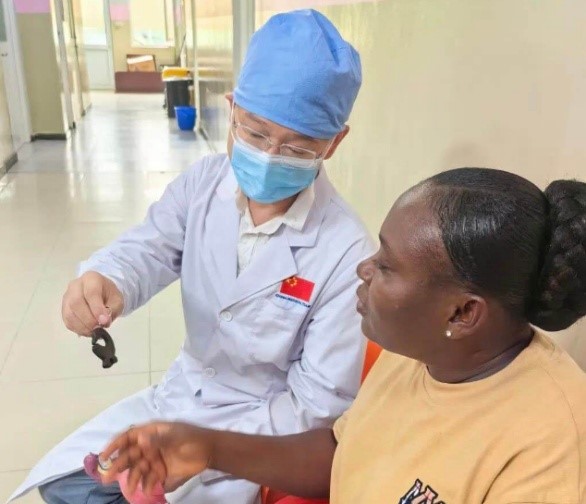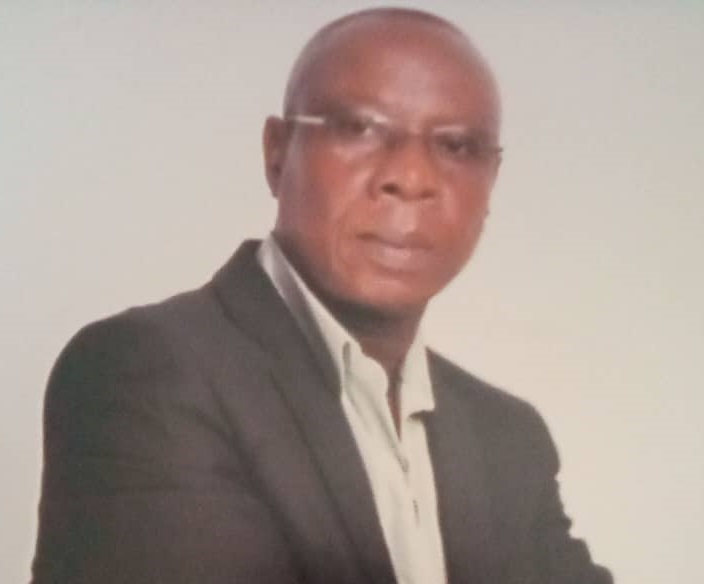General
Chinese doctor uses Adinkra symbols in orthodox medicine practice
Dr. Zhu Yafei, , a renowned Gynaecologist and a member of the 2025 Chinese Medical Team stationed at LEKMA Hospital, arrived in Ghana with more than just a stethoscope. He came armed with narrative medicine and the ancient Adinkra symbols of the Akan, determined to turn language barriers into bri...
MyJoyOnline
published: Aug 25, 2025


Dr. Zhu Yafei, (a.k.a Dr Luke), a renowned Gynaecologist and a member of the 2025 Chinese Medical Team stationed at LEKMA Hospital, arrived in Ghana with more than just a stethoscope.
He came armed with narrative medicine and the ancient Adinkra symbols of the Akan, determined to turn language barriers into bridges of understanding.
Listening
Guided by the principles of Narrative Medicine—a model that places emphasis on listening to a patient’s story, which is as vital as any scan—Dr. Zhu and his colleagues set aside the comfort of Mandarin and embraced Twi, with the humility of first-year students. Their classroom was every bedside in LEKMA.
Adinkra, medical vocabulary
From the kente patterns on market stalls to the 100-cedi banknote, Adinkra symbols became the new lingua franca.
On July 31, 2025, Dr. Zhu stepped onto the dais of the first 2025 China-Ghana minimally invasive surgery innovation and knowledge summit.
He spoke on the topic “My Reflections on Laparoscopic Minimal-invasive Surgery in Gynaecology.”
Slide by slide, the renowned Gynaecologist narrated how he expertly used the symbols to cure various complex health conditions among patients at the hospital.
Symbols
His first slide made use of SANKOFA, the bird that twists its neck to retrieve the egg. Dr Zhu explained it to mean that one must “learn from the past” or “return and get it.”
The renowned Gynaecologist equally told the audience why he used the SANKOFA symbol and pointed out that “We must revisit every past laparoscopic case—its triumphs and pitfalls—so that tomorrow’s African woman meets a safer theatre.”
By the time he got to the middle part of his presentation, it was clear that his talk had resonated well with his audience.

In the middle of his presentation he introduced another symbol known as
DWENNIMMEN—the ram’s horns that grace both the national currency and the University of Ghana crest.
Here, Dr Zhu cautioned that “Strength—without humility—injures the very people we claim to heal.”
In his concluding remarks the renowned Gynaecologist mentioned another popular symbol known as GYE NYAME meaning “Except God.”
He told his audience that God is the ultimate even in narrative medicine practice, stressing that “Modern medicine is not omnipotent; the laparoscope is only a tool. Reverence for life and for the Divine keeps us humble.”
Loud applause
Apparently the audience who were excited about how Dr Zhu expertly used the symbols to explain medical issues gave him a resounding applause.
Local surgeons later described the lecture as “the first time a foreign physician used PowerPoint to explain medical issues in Twi.”
From lecture hall to labour ward
The symbols followed Dr. Zhu home.
• In dealing with Ectopic pregnancy and pre-operation counselling, Dr Zhu encountered a situation where a teenager refused to disclose previous abortions.
Dr. Zhu then traced SANKOFA on the patient’s file, stressing that “Learning from the past keeps the next pregnancy safe.” The patient eventually poured her story out and surgery proceeded without any further delay.
• Another medical condition Dr Zhu dealt with was Post-partum haemorrhage which refers to excessive bleeding after multiple caesarean sections.
Before discharging the patient, Dr. Zhu returned with the same bird symbol urging the patient to “Let the past teach us.”
The patient accepted long-acting contraception and the agreement was sealed in symbols, not statistics.
• In the area of Emergency theatre, Dr Zhu dealt with a condition known as Placenta Praevia which comes with torrential bleeding.
Dr. Zhu placed a small GYE NYAME sticker on his hand and told the patient who was hesitating that “Time is life.”

“Doctors are vessels of God’s cure and refusing the doctor is refusing the vessel God has sent” the Gynaecologist warned. The patient understood and gave the doctor her consent to go ahead with the operation and eventually mother and child survived.
Notes from the ward
It is worthy to note that some patients had forgotten the glyphs. However none forgot their meaning once they were retold.
Dr. Zhu has begun photographing faded Adinkra symbols on taxi dashboards and market umbrellas, compiling a bilingual handbook so that heritage is never lost in translation.
Symbols explained
• AYA, the fern that grows in rocky soil—resilience for patients in pain and for doctors on 36-hour calls.
• AKOMA NTOSO, four hearts linked—Dr. Zhu pins it to the whiteboard during hand-over: “Our hearts beat in step with the patient’s.”
• BAOFO YE NA, “a willing helper is rare.” He teaches interns that genuine help carries no invoice.
Epilogue
Indeed, Narrative Medicine and Adinkra symbols have done what no scalpel alone could—they have stitched two cultures into one story of care and friendship between China and Ghana.

The Writer, Michael Kalley, is a former Tax Auditor of the Ghana Revenue Authority and a Sociopolitical Analyst. He has published about 100 articles.
Read More